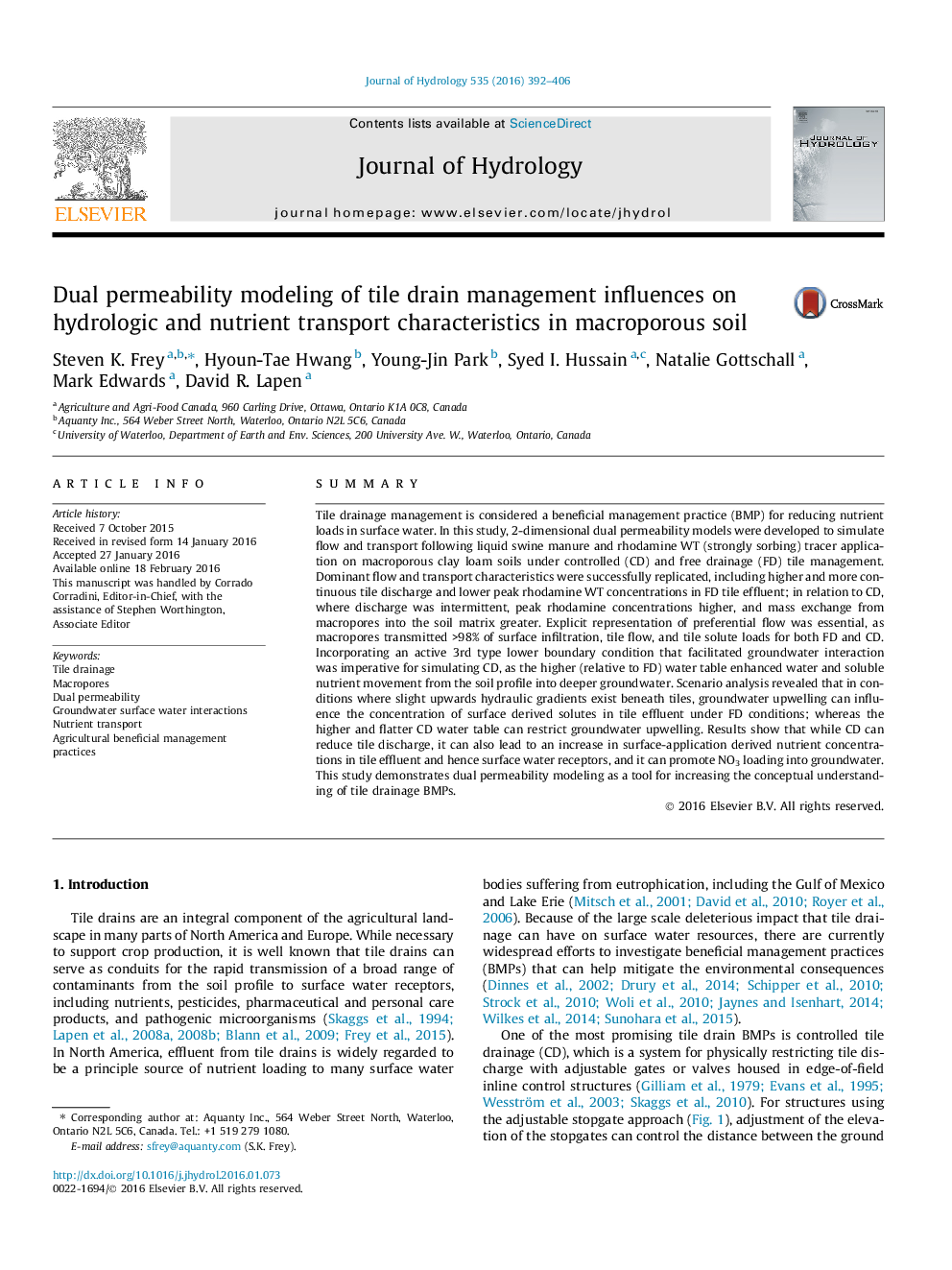| کد مقاله | کد نشریه | سال انتشار | مقاله انگلیسی | نسخه تمام متن |
|---|---|---|---|---|
| 6410134 | 1629917 | 2016 | 15 صفحه PDF | دانلود رایگان |
- Liquid manure application was modeled with a dual permeability model.
- Tile drainage management scenarios were incorporated.
- Reactive transport characteristics of agricultural nutrients were considered.
- Groundwater influences on tile drain discharge and nutrient transport were important.
- Controlling tile drainage can promote NO3 movement into groundwater.
SummaryTile drainage management is considered a beneficial management practice (BMP) for reducing nutrient loads in surface water. In this study, 2-dimensional dual permeability models were developed to simulate flow and transport following liquid swine manure and rhodamine WT (strongly sorbing) tracer application on macroporous clay loam soils under controlled (CD) and free drainage (FD) tile management. Dominant flow and transport characteristics were successfully replicated, including higher and more continuous tile discharge and lower peak rhodamine WT concentrations in FD tile effluent; in relation to CD, where discharge was intermittent, peak rhodamine concentrations higher, and mass exchange from macropores into the soil matrix greater. Explicit representation of preferential flow was essential, as macropores transmitted >98% of surface infiltration, tile flow, and tile solute loads for both FD and CD. Incorporating an active 3rd type lower boundary condition that facilitated groundwater interaction was imperative for simulating CD, as the higher (relative to FD) water table enhanced water and soluble nutrient movement from the soil profile into deeper groundwater. Scenario analysis revealed that in conditions where slight upwards hydraulic gradients exist beneath tiles, groundwater upwelling can influence the concentration of surface derived solutes in tile effluent under FD conditions; whereas the higher and flatter CD water table can restrict groundwater upwelling. Results show that while CD can reduce tile discharge, it can also lead to an increase in surface-application derived nutrient concentrations in tile effluent and hence surface water receptors, and it can promote NO3 loading into groundwater. This study demonstrates dual permeability modeling as a tool for increasing the conceptual understanding of tile drainage BMPs.
Journal: Journal of Hydrology - Volume 535, April 2016, Pages 392-406
